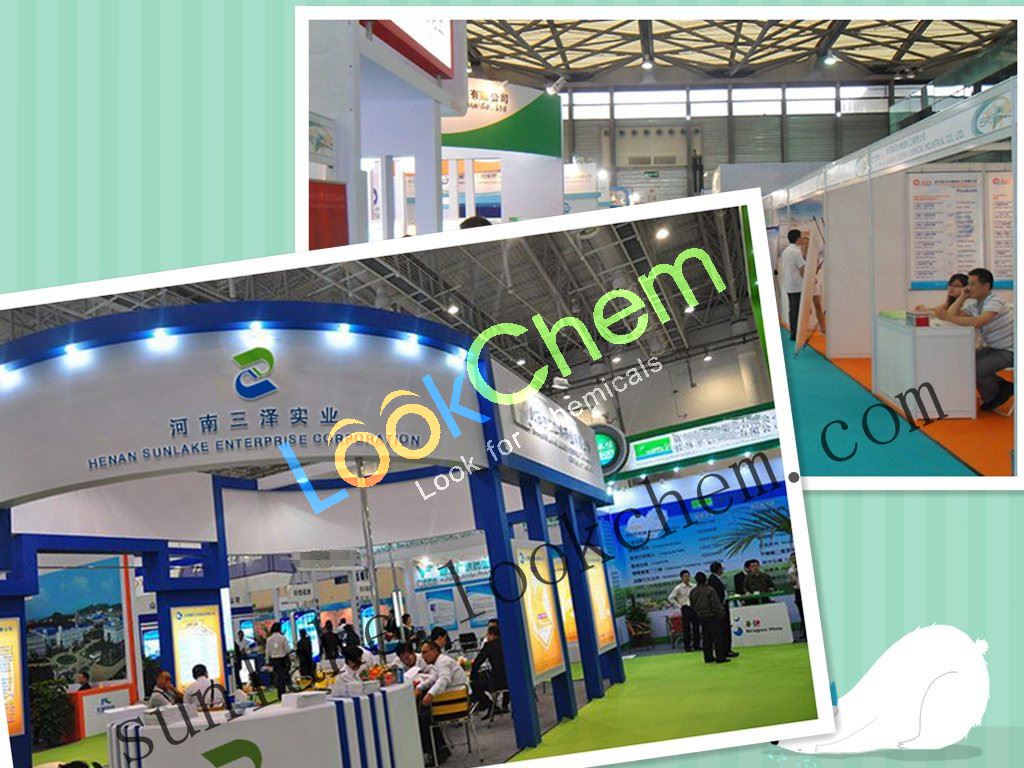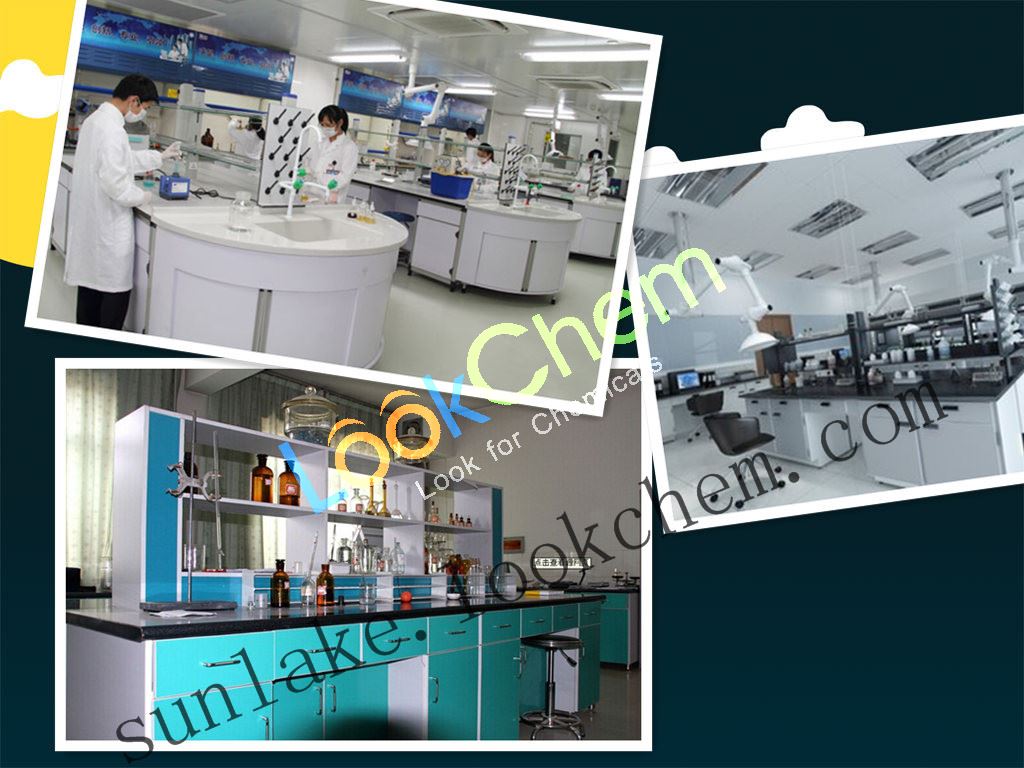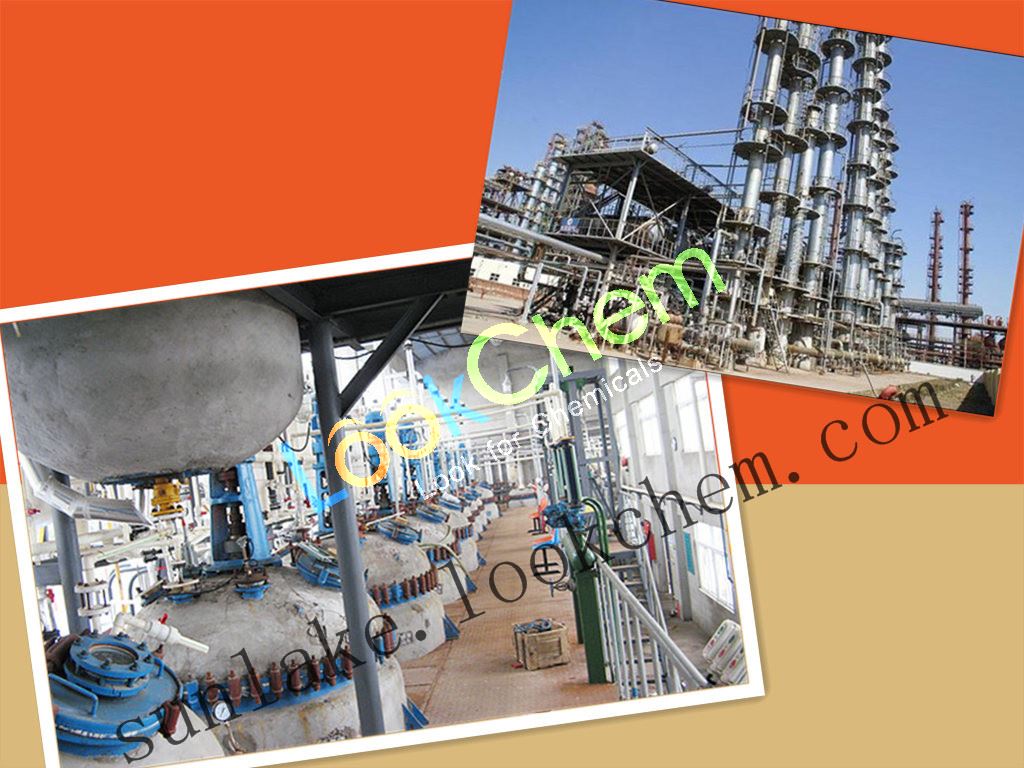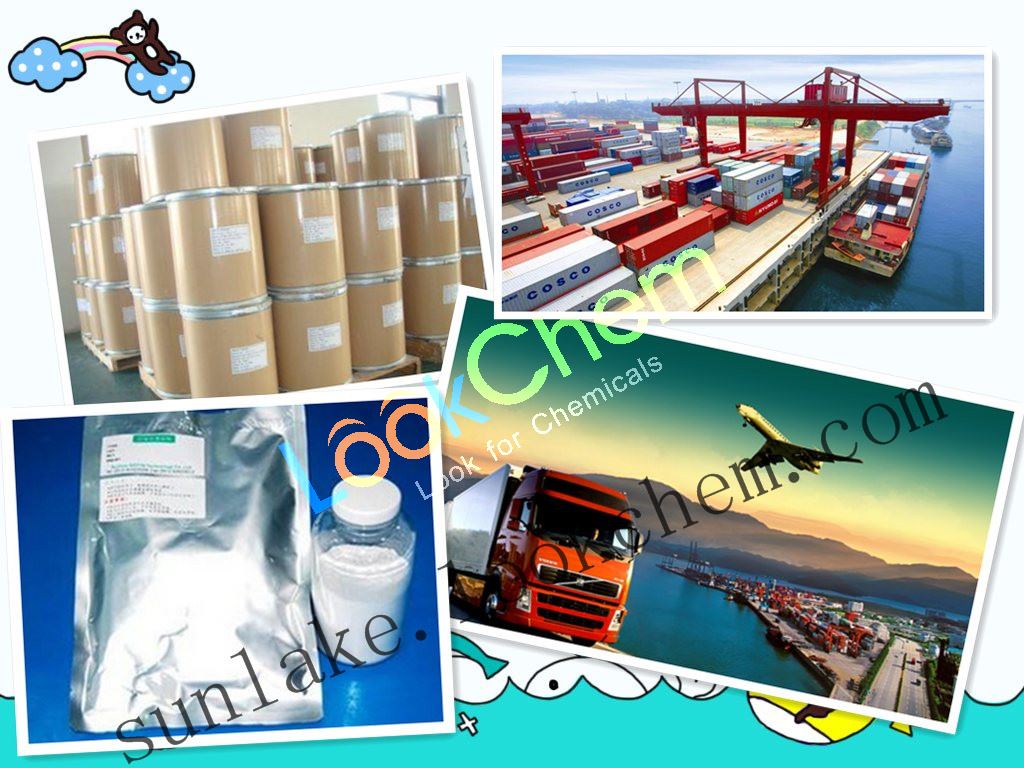Product Certification&
Enterprise Certification
Country: ![]() China (Mainland)
China (Mainland)
Business Type:Trading Company
Tel: 17734809689
Mobile:
Tel: 17734809689
Fax: +86-371- 86259723
Province/state: HENAN
City: ZHENGZHOU
Street: Mingmen International Center, NO.222 Dongming Road,Zhengzhou,Henan,China
MaxCard:
 Contact Suppliers
Contact Suppliers
CAS NO.79350-37-1
1(10-100)Metric Ton1(10-100)Metric Ton
| Cefixime Basic information |
| Product Name: | Cefixime |
| Synonyms: | YTTERBIUM(III) IONOPHORE I;)(carboxymethoxy)imino)acetylamino)-3-ethenyl-8-oxo-,(6r-(6-alpha,7-beta(z)));cl284635;fk027;fr17027;8-[[2-(2-amino-1,3-thiazol-4-yl)-2-(carboxymethoxyimino)acetyl]amino]-4-ethenyl-7-oxo-2-thia-6-azabicyclo[4.2.0]oct-4-ene-5-carboxylic acid;(6R,7R)-7-[2-(2-AMINO-4-THIAZOLYL)GLOXYLAMIDO]-8-OXO-3-VINYL-5-THIA-1-AZABICYCLO[4.2.0]OCT-2-ENE-2-CARBOXYLIC ACID, 72-(Z)-[O-(CARBOXYMETHYL)OXIME]TRIHYDRATE;CEFIXME TRIHYDRATE |
| CAS: | 79350-37-1 |
| MF: | C16H15N5O7S2 |
| MW: | 453.45 |
| EINECS: | |
| Product Categories: | Intermediates & Fine Chemicals;Pharmaceuticals;Sulfur & Selenium Compounds;Heterocycles;cephalosporins |
| Mol File: | 79350-37-1.mol |
|
|
|
| Cefixime Chemical Properties |
| mp | 218-225°C |
| storage temp. | Hygroscopic, Refrigerator, Under Inert Atmosphere |
| Water Solubility | 55.11 mg/L |
| CAS DataBase Reference | 79350-37-1(CAS DataBase Reference) |
| Safety Information |
| Hazard Codes | Xn |
| Risk Statements | 42/43 |
| Safety Statements | 22-36/37-45 |
| WGK Germany | 3 |
| F | 10-23 |
| HS Code | 38210000 |
| MSDS Information |
| Provider | Language |
|---|---|
| SigmaAldrich | English |
| Cefixime Usage And Synthesis |
| Cephalosporin antibiotics |
Cefixime is a third-generation oral cephalosporin antibiotic, also known as Oroken, Suprax, Cefspan, in clinic used for the treatment of bacterial infectious diseases caused by Streptococcus (except Enterococci), Pneumonia chain, Neisseria gonorrhoeae, Escherichia coli, Branhamella catarrhalis, Serratia bacteria, Citrobacter, Enterobacter cloacae, Enterobacter aerogenes, Haemophilus influenzae, Klebsiella, Serratia, Proteus and Haemophilus Influenzae, etc. the indications are as follow: 1. respiratory infections, such as pneumonia, tonsillitis, pharyngitis, bronchiectasis (infection), secondary infection of chronic respiratory infectious diseases ,acute and chronic bronchitis, etc. 2. urinary and reproductive tract infections, such as gonococcal urethritis, cervicitis, pyelonephritis, cystitis, gonorrhea , etc. 3. intra-abdominal infections (including cholecystitis, cholangitis, peritonitis). 4. scarlet fever, otitis media, sinusitis and so on. |
| Mechanism of action | Antibacterial mechanism of action in Cefixime is similar to other third-generation cephalosporins, through combined with one or more penicillin-binding proteins (PBPs), inhibits cell wall synthesis of bacterial dividing cells. PBPs is located in the cytoplasmic membrane of bacteria, possibly is catalyzing enzyme of bacterial cell wall synthesis last phase. The role of the results of this product is to make the bacteria form defective cell wall which is unstable for osmotic pressure, thereby having an antibacterial effect. Different strains have their own unique PBPs. Different affinity of Cefixime on different PBPs is the main factor affecting its activity of antibacterial spectrum. |
| Drug Interactions |
1. in combination with aminoglycoside antibiotics have synergistic antibacterial effect on certain sensitive strains. 2. there are reports that aspirin may increase the blood concentration of Cefixime. 3. in combination with aminoglycosides or other cephalosporins will increase the renal toxicity. 4. in combination with strong diuretics such as furosemide can enhance nephrotoxicity. 5. in combination with chloramphenicol may have mutual antagonism. 6. probenecid can prolong the excretion of Cefixime and elevated blood concentrations. The above information is edited by the chemicalbook of Liu Yujie. |
| Precautions |
1. Cross allergy: patients who are allergic to a cephalosporin or head neomycin (cephamycin) may be allergic to other cephalosporins or head neomycin. Who are allergic to penicillins, penicillin derivatives, or penicillamine may also be allergic to cephalosporins or head neomycin. 2. Contraindication: patients who are allergic to this product and other cephalosporins are disabled. 3. Used with caution: (1) patients who are allergic to penicillin antibiotic are used with caution. (2) pregnant women, lactating women, newborns and preterm children are used with caution. (3) severe liver and kidney dysfunction are used with caution. (4) highly allergic constitution are used with caution. (5) the elderly, frail patients are used with caution. 4. Effects on the diagnosis: (1) It may be false positive when copper sulfate method to determine urine sugar. (2) direct antiglobulin test (Coomb's test) were positive reaction. (3) a small number of patients after treatment may appear increased alkaline phosphatase, serum alanine aminotransferase and serum aspartate aminotransferase, serum creatinine and blood urea nitrogen. 5. Monitoring items when must use: (1) long-term medication should regularly check liver and kidney function, and blood and urine routines. (2) patients with liver and renal damage should monitor blood concentration when use Cefixime. |
| Chemical properties |
White or light yellow crystalline powder, odorless or slight smell. Soluble in ethanol or dimethyl sulfoxide, slightly soluble in acetone, almost insoluble in ethanol, hexane, ethyl acetate or water. Acute toxicity mindanao. Mouse, rat (mg / kg): All> 10,000 orally; 5000,7000 intravenous injection. (Z)- Cefixime Disodium:C16H13N5O7S2Na2. Melting point>250℃. (E) - Cefixime trihydrate: C16H15N5O7S2 3H2O . A pale yellow solid, melting point is 218 ~ 225 ℃ (decomposition). |
| Application | The third-generation oral cephalosporin class of broad-spectrum antibiotics, has strong antibacterial effect on Gram-positive bacteria such as Streptococcus, and Gram-negative bacteria such as Neisseria gonorrhoeae, Haemophilus influenzae, , as well as E. coli , Klebsiella pneumoniae, Proteus mirabilis, which are resistance to cefaclor, cephalexin, cefadroxil resistant, and is stable for β- lactamase produced by various bacteria. Long-acting, efficient and can be administered once a day. Clinically used for respiratory tract infections,urinary tract infections and biliary tract infections caused by susceptible strains. |
| Production methods |
Method 1: 7-ACA as a raw material. 7-ACA (18.7 g, 67 mmol) was suspended in mixed solution of 120 ml water and 120 ml methanol, dropwise added sodium hydroxide (5.5 g, 142 mmol) dissolved in 18 ml aqueous solution at -20 ℃, stirred at -10 ~ -20℃ for 25 min, used concentrated hydrochloric acid to neutralize Ph: 7.5. Added salicylaldehyde (10.7 g, 87.6 mmol) at 15 ℃, then stirred for 1h. Added diphenyl diazomethane (15.7g, 80.9mmo1) in 85 ml of ethyl acetate solution, continued to stir for 1h. During the reaction, used 1 mol / L hydrochloric acid to maintain that Ph value of the reaction solution was 4.0 to 4.5. The reaction solution was extracted with 550 ml of ethyl acetate and the extract was washed with brine, concentrated under reduced pressure. The residue was impregnated with petroleum ether to give 29.6 g compound (the I), yield was 78.1%, melting point was 97 ~ 98.5 ℃ (decomposition). Compound (I) (1.01 g, 2 mmol) was dissolved in 10 ml of dichloromethane was added phosphorous pentachloride (0.46 g, 2.2 mmol) and pyridine (0.176 g, 2.2 mmol) at -30℃, stirred for 1h at -20 to -30℃. The reaction solution was poured into ice water, the organic layer was separated, washed with brine, dried, concentrated under reduced pressure. Obtained 0.9 g compound (Ⅱ), yield was 85.7%, melting point was 180.5 ~ 182.0 ℃. Compound (Ⅱ) (4.0 g, 7.6 mmol) was dissolved in 10 ml of dimethylformamide, under cooled and stirred, added triphenylphosphine (2.2 g, 8.4 mmol). After addition, the mixture was stirred at room temperature for 2 h. The reaction solution was poured into 250 ml of isopropanol, the precipitate was collected by filtration (6.7 g). The precipitate was dissolved in 10 ml of dichloromethane and 5 ml of water, added 17.4 ml 36% aqueous solution of formaldehyde. Used 10 % sodium carbonate aqueous solution to adjust Ph = 9.0. After stirred at room temperature for 1 h, extracted with 20ml dichloromethane. The extract was washed with brine, dried, concentrated under reduced pressure. Obtained 3.0 g compound (Ⅲ), yield was 78.9%, melting point was 180.5 ~ 182 ℃ (decomposition). Compound (Ⅲ) (18.96 g, 38.2 mmol) was dissolved in mixture of 135 ml ethyl acetate and 34 ml ethanol, added 5.7 ml of concentrated hydrochloric acid at room temperature and stirred for 1.5 h. The precipitate was collected by filtration, washed with ethyl acetate and dried. Obtained 11.32 g compound (Ⅳ), yield was 69%, melting point was 172 ~ 173 ℃ (decomposition). Under -5 ~ 0 ℃ and stirred, phosphorus oxychloride (7.7 g, 50.1 mmol) was dropwise added into dimethyl formamide (3.66 g, 50.1 mmol) and 80 ml of tetrahydrofuran , stirred for 30 min to give Vismeier reagent. Under ice-cooling, the compound (V) (13.8 g, 41.8 mmol), and then stirred for 1 h to give a solution of the active compound (V) . At -20 ℃, and the solution was added to the compound (Ⅳ) (15 g, 34.9 mmol) and N- (trimethylsilyl) acetamide (MSA) (32 g, 244 mol) in 150 ml of ethyl acetate solution, continued to stir for 30 min. Added ethyl acetate and water, the organic layer was separated, washed with 5% sodium bicarbonate solution and brine, and dried. Concentrated under reduced pressure, the residue was impregnated with isopropyl alcohol to give 23.1 g compound (Ⅵ), yield was 97.5%. Compound (Ⅵ) (19.0 g, 28.0 mmol) was dissolved in 380 ml of methanol, added concentrated hydrochloric acid (11.6 g, 112 mmol) at room temperature, and stirred for 1h. With 5% aqueous sodium bicarbonate and concentrated under reduced pressure. After the residue was dissolved in ethyl acetate, washed with brine, and dried. Concentrated under reduced pressure, the residue was impregnated with isopropyl alcohol to give 15.3 g compound (VII), yield was 84.1%. Compound (Ⅶ) (15.0 g, 23 mmol) was dissolved in 15 ml of anisole, cooled in an ice bath, 60 ml trifluoroacetic acid was added. After addition, stirred for 80 min at room temperature. Under stirred, the reaction was dropwise added into 600 ml of isopropanol. The resulting precipitate was collected by filtration, dissolved in 5% aqueous sodium bicarbonate, washed with ethyl acetate. Used 5% hydrochloric acid the aqueous solution to adjust Ph = 6.0, used a macroporous non-ionic absorption resin (Diaion HP-20) column chromatography, eluted with water. Under cooling, used 10% hydrochloric acid effluent to acidify Ph = 2.3. The precipitate was collected by filtration and dried to give 3.55 g Cefixime, yield was 34.1%. Method 2: deacetyl cephalosporin C as raw materials. Deacetyl cephalosporin C sodium salt (118.6 g, 0.3 mol) was dissolved in 1.0 L water and 0.6 L acetone, added benzoyl chloride (42.1 g, 0.3 mol) at 10 ~ 15 ℃, during the addition, used 20 % sodium carbonate solution to maintain the reaction solution at Ph value of 6.5 to 7.5. After addition, under 10 ~ 15 ℃ stirred for 1 h. Acetone was distilled off under reduced pressure, the remaining aqueous solution was washed with ethyl acetate. 300 ml of ethyl acetate was added to the aqueous solution, added diazo diphenyl methane (135.8 g, 0.75 mol) solution in 1.0 L of ethyl acetate. After used concentrated hydrochloric acid to adjust Ph = 3.5, followed by stirred at room temperature for 1.5 h. Used concentrated hydrochloric acid to adjust the reaction solution to Ph = 2.5, the organic layer was separated, washed with brine, dried, concentrated under reduced pressure. The residue was dissolved in 400 ml of acetone, added 4.0 L isopropyl ether. The precipitate was collected to give 224.8 g compound (VIII), yield was 92.5%. Compound (Ⅷ) (100 g, 0.123 mol) was dissolved in 600 ml of dichloromethane, added phosphorous pentachloride (25.6 g, 0.123 mol) at -30 ℃, added pyridine (9.8 g, 0.123 mol). After stirred at -20 ~ 10 ℃ for 1 h, the reaction solution was poured into mixture of 500 ml dichloromethane and 300 ml water. The dichloromethane layer was separated, washed with brine, dried, and concentrated under reducedl. The residue was impregnated with isopropyl ether to give 114.5 g of powdery compound (IX), yield was 98%. Compound (Ⅸ) (102 g, 0.123 mol) was dissolved in 300 ml of dimethylformamide, added sodium iodide (18.4 g, 0.123 mol) at 35 ℃, stirred for 30 min. Added triphenylphosphine (48.5 g, 0.185 moL), stirred at 35 ~ 38 ℃ for 1 h. Concentrated under reduced pressure to a residual volume of 2/3, which was dropwise added into 5.0 L of isopropyl alcohol. The precipitate was collected by filtration, washed with isopropyl ether, and dried. Concentrated under reduced pressure, about 123.5 g of the remaining solid was dissolved in 1.0 L of dichloromethane, added 300 ml 36% formaldehyde at 25 ℃, stirred for 2h, and treated with 20% sodium carbonate to maintain at Ph value of 9.0. After completion of the reaction, used 10% hydrochloric acid to adjust at Ph = 5.0. The organic layer was separated, washed with brine, and evaporated under reduced pressure. The residue was impregnated with ethyl acetate to give 63.5 g powdery compound (X), yield was 75.8%. At 5 ℃, pyridine (5.9 g, 74.4 mmol) was added into phosphorus pentachloride (15.5 g, 74.4 mmol) in 200 ml of dichloromethane, stirred for 20 min. Compound (X) was added at 5 ℃, stirred for 2 h, cooled to -40 ℃, also was added at once 120 ml of methanol cooled to -40 ℃. The reaction solution was gradually raised to 20 ℃ within 1 h. The reaction solution was concentrated under reduced pressure, the residue was impregnated with 300 ml of ethyl acetate and 50 ml water. The precipitate was collected by filtration, washed twice with 50 ml of isopropanol, and then washed with 50 ml isopropyl ether. 8.4g crystalline compound (Ⅳ) was obtained, a yield of 79.0%. Compound (Ⅳ) was reacted as the same method 1 to obtain Cefixime. |
| Chemical Properties | Pale Yellow Solid |
| Usage | Antibacterial |
| Usage | Orally active, third generation cephalosporin antibiotic |
| Cefixime Preparation Products And Raw materials |
| Raw materials | Dichloromethane-->N,N-Dimethylformamide-->Isopropanol-->Phosphorus pentachloride-->Triphenylphosphine-->formaldehyde-->Salicylaldehyde-->Diphenyldiazomethane |
Service we provide:
1. Mixed container, we can mix different items in one container.
2. Quality control, before shipment, free sample for test. after shipment, keep sample for 3 years
3. Prompt shipment with professional documents
4. Packing as your request, with photo before shipment
We have clients throughout the world:
Professional service and rich experience make customers feel at ease, adequate stock and fast delivery meet your desire.

Our Laboratoy
We have our own independent lab test center:
This makes sure that our technology support is reliable and authoritative.All of self-owned fine chemicals are manufactured strictly in accordance with international standard.,and also has scientific cooperation with local colleges and institutes.

Our factory
High quality with competitive price:
We are manufacturer and can provide high quality products with factory price

Package & Shipment
Fast and safe delivery:
Parcels can be sent out within 24 hours after payment. Tracking number is available
Secure and discreet shipment. You have various choices of transportation methods
